| Dhyan Chand Is First Sportsman To Feature In Amar Chitra Katha Comics |
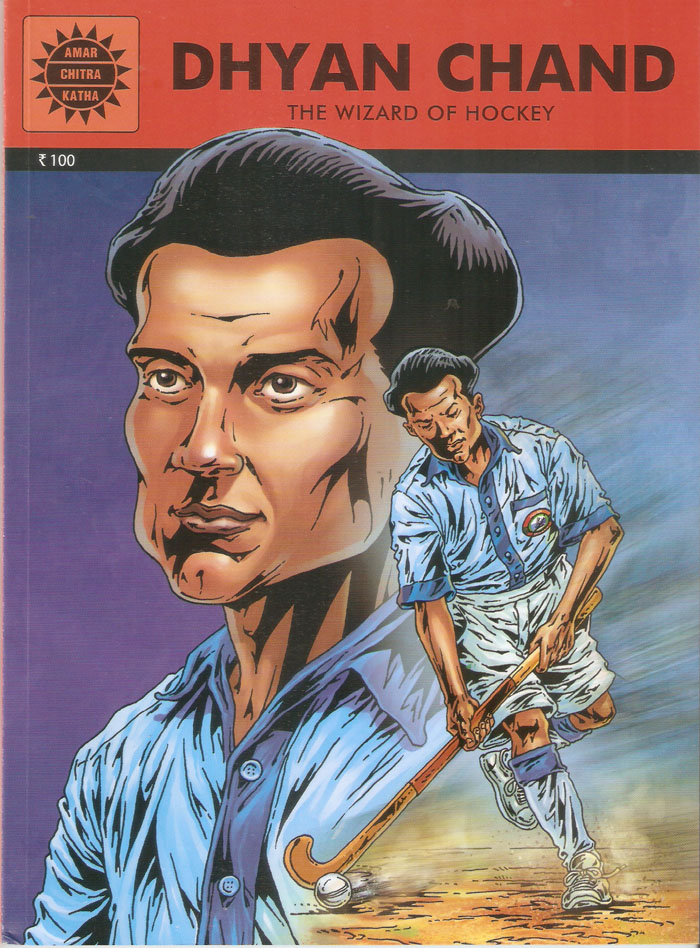
 n Dhyan Chand's 108th birth anniversary,
a comic book on the hockey legend was released by publishers Amar Chitra Katha. The 64-page
graphic biography was launched by Minister of State for Human Resource
Development, Shashi Tharoor, at the Major Dhyan Chand National Stadium in Delhi. n Dhyan Chand's 108th birth anniversary,
a comic book on the hockey legend was released by publishers Amar Chitra Katha. The 64-page
graphic biography was launched by Minister of State for Human Resource
Development, Shashi Tharoor, at the Major Dhyan Chand National Stadium in Delhi.
Said Tharoor on the occasion, "There could be no better day to celebrate
India's National Sports Day, observed on the birthday of Dhyan Chand. He gave his heart and soul for the
country. His legacy goes beyond hockey. The fact that he won three gold
medals for India shows that he was a true team man. What a patriot he was.
Dhyan Chand is to hockey what Pele is to football
and Muhammad Ali is to boxing. I have read that Don
Bradman met Dhyan Chand in 1935, and the Australian told Dhyan Chand that he was
the best player he has seen."
It is the first time in Amar Chitra Katha's 46-year-history that a sportsperson has been featured
in the publication.
Said Reena Puri, editor of Amar Chitra Katha, "Dhyan Chand is a huge figure in the world of sports.
He is the perfect role model and the perfect icon for young people. He
was the first choice when we thought of doing graphic novels on sports
personalities. We were looking for a person who made his sporting talent
mean something to the entire country, and Dhyan Chand did that. His
story has heroism, drama and talent. Dhyan Chand was an epitome of
excellence in his field. We wanted people to learn how to excel despite
facing hardships in life. In a world where our young people see
corruption and irresponsible action all around, the story of Dhyan Chand
will bring courage, hope and a belief that hard work and honesty can
reap great rewards."
Continued Reena, "It was difficult to find reference material on
Dhyan Chand. We relied on his autobiography (Goal) to get information on
him. We even contacted Laussane (IOC headquarters) to get more material
about those days, like the colours of the jerseys that the Indian team
wore in the 1928, 1932 and 1936 Olympics. But even the IOC had only
black and white photos of that era. We then looked at the current Team
India colours and adapted them for the players in the book"
Mumbai-based Mohan, Chief Operating Officer, ACK Media, said, "This
is the first in our series on sports biographies. We have been looking
to do stories which talk about people who have shaped modern India in
various disciplines, including sports, and we felt that Dhyan Chand is a
suitable person to start with."
The idea to come out with a graphic book on Dhyan Chand was initiated
by the publisher around 18 months back. The script of the book has been
written by Luis Fernandes, who read Dhyan Chand's autobiography, saw
video clippings on the 1936 Berlin Olympics, spoke to people who had
played with him, and researched extensively on the subject while writing
the script.
Each copy of the Amar Chitra Katha's Dhyan Chand special edition
will cost  90. The
book is available for purchase online on the
Amar Chitra Katha site. 90. The
book is available for purchase online on the
Amar Chitra Katha site.
|
| India Has Matured Into A Multi-Sport Country |
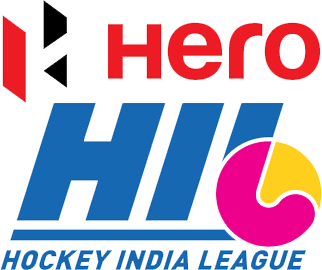
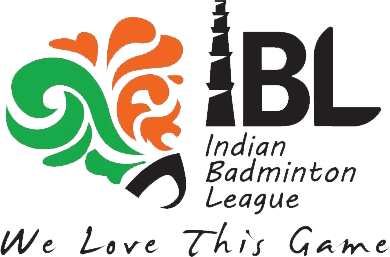
Article by Urvi Malvani, courtesy Business Standard
 ased
on advertising revenues and viewership numbers, sports like badminton
and hockey are coming of age in India. The table below shows how the
badminton league (IBL) and the hockey league (HIL) compare to the
cricket league (IPL edition 6). ased
on advertising revenues and viewership numbers, sports like badminton
and hockey are coming of age in India. The table below shows how the
badminton league (IBL) and the hockey league (HIL) compare to the
cricket league (IPL edition 6).
| Category |
Metric |
IBL |
HIL |
IPL6 |
| Television |
Television Reach |
2.17 crore |
4.14 crore |
19 crore |
| |
Broadcasting Network |
ESPN Star Sports |
ESPN Star Sports |
SET Max, Sony Six |
| |
Average Viewers/Day |
1.2 million |
1.59 million |
3.5 million |
| |
Television Rating |
1.0 |
|
|
| |
Telecast In |
|
146 countries |
|
| Finances |
Number of Advertisers |
10 |
6 |
|
| |
On-Ground Sponsors |
1 |
4 |
|
| |
Advertisement Revenue |
 75-90 crore 75-90 crore |
 60-70 crore 60-70 crore |
 850-875 crore 850-875 crore |
| Social Media |
Facebook Likes |
110,000 |
544,000 |
|
| |
YouTube Subscribers |
5,800 |
34,400 |
|
Mona Jain, CEO of VivaKi
Exchange, the agency responsible for marketing and communication of the
Indian Badminton League, says: "It has been a very
encouraging start for IBL. The response from the
audiences and advertisers has been very good. The television rating for the
tournament, above 1.0, says it all."
"The first year is always low in
terms of revenues, as it is the time franchises and all parties involved
are pumping in money, with no immediate returns. Even IPL picked up only in the second year. IBL and
HIL may not have made lot of money in their inaugural year but, going by the
response, one can say these properties will only become richer and more
popular next year," says a media planner, asking not to be named.
Says another media planner, "The IBL, despite its lower reach than that of the HIL,
earned higher advertisement revenues. This is because Badminton viewership is skewed
slightly more towards the Socio Economic Classification - A (SEC A) audience. So, the
spend on the IBL property by brands could have been higher. Also, hockey is
more male-skewed and has less of a pan-Indian appeal when compared to
badminton."
The IBL (18 days duration) earned its revenue in one third the duration of the
IPL (54 days), while the HIL (26 days) earned its revenue in less than half the duration of the IPL.
Also, ESPN Star Sports, the
host broadcaster for both the IBL and HIL, should be given due credit, feel media
observers. The events got a good showcase because of the broadcaster's
reach and marketing. In the case of IBL, VivaKi
Exchange came up with an outdoor campaign featuring top-notch badminton
players. This grabbed a lot of eyeballs.
Another factor that contributed to the relative success of the IBL
and HIL is cricket fatigue of the Indian viewers, due to over-exposure
to the sport, thrust upon the BCCI by broadcasting partners.
ESPN India COO Vijay Rajput says: "India has primarily been a single-sport country. But at
STAR Sports, we believe Indian fans would love to follow other sports
as well, if the product is well packaged and presented. Our main aim is to broadbase
the viewership of sports in the
country. We see huge potential for a product like IBL,
much like we saw value in the Hockey India League."
|
| India Lose To South Korea In Asia Cup Final |
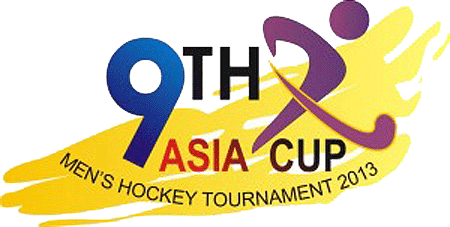
 he
9th Men's Asia Cup was held at the Sultan Azlan Shah Stadium in
Ipoh, Malaysia, from August 24 - September 1, 2013. The winner of the
Asia Cup would automatically qualify for the 2014 Men's World Cup. The tournament was
telecast live on ESPN Star Sports in India. he
9th Men's Asia Cup was held at the Sultan Azlan Shah Stadium in
Ipoh, Malaysia, from August 24 - September 1, 2013. The winner of the
Asia Cup would automatically qualify for the 2014 Men's World Cup. The tournament was
telecast live on ESPN Star Sports in India.
A total of 8 teams participated in the tournament, and were divided
into 2 pools as below.
- Pool A: Pakistan, Malaysia, Japan, Chinese-Taipei
- Pool B: South Korea, India, Bangladesh, Oman
China did not participate in the tournament, possibly because of a
clash with China's National Games, which were held from 31st August to
12th September, 2013.
India went into the Asia Cup without the services of four first-team forwards - S. V.
Sunil, Danish Mujtaba, Gurvinder Singh Chandi and Akashdeep Singh -
all of whom were out due to injuries suffered in the lead up to the tournament.
India finished 2nd in the Asia Cup, with the following match results:
| Stage |
Date |
Result |
Goal Scorers - India |
| Pool |
Aug 24 |
India 8 - Oman 0 |
Mandeep Singh (4, 40, 44 min)
Ramandeep
Singh (17 min)
V. R. Raghunath (28 min)
Rupinder Pal Singh
(34 min)
Malak Singh (47 min)
S. K. Uthappa (69 min) |
| |
Aug 26 |
India 2 - South Korea 0 |
V. R. Raghunath (6 min), PC
Mandeep Singh (65 min) |
| |
Aug 28 |
India 9 - Bangladesh 1 |
Rupinder Pal Singh (4m-PC, 19m-PC, 27m-PS,
61m-PC)
Nikin Thimmaiah (25 min)
V. R. Raghunath (29, 52, 59 min), all PCs
Malak Singh (47 min) |
| Semi-finals |
Aug 30 |
India 2 - Malaysia 0 |
V. R. Raghunath (8 min), PC
Mandeep Singh (60 min) |
| FINAL |
Sep 1 |
South Korea 4 - India 3 |
Rupinder Pal Singh (48 min), PC
Nikkin Thimmaiah (57 min)
Mandeep Singh (64 min) |
The final standings in the 9th Asia Cup were as follows: 1 -
South Korea, 2 - India, 3 - Pakistan, 4 - Malaysia, 5 - Japan, 6 -
Oman, 7 - Bangladesh, 8 - Chinese Taipei
The following were the individual and team awards in the 9th Asia
Cup:
- Goalkeeper of the Tournament: P. R. Sreejesh (India)
- Top Goal Scorer of the Tournament: Jang Jong-hyun (South Korea), 8 goals
- Player of the Tournament: V. R. Raghunath (India)
- Fairplay Trophy: Japan
Hockey India announced cash awards of  1
lakh each to V. R.
Raghunath and P. R. Sreejesh for the above individual awards. In
addition, forward Ramandeep Singh was also awarded 1
lakh each to V. R.
Raghunath and P. R. Sreejesh for the above individual awards. In
addition, forward Ramandeep Singh was also awarded  1
lakh for scoring a goal on his international debut against Oman. 1
lakh for scoring a goal on his international debut against Oman.
India now has to wait till November - for Australia or New Zealand
to win the Oceania Cup - to confirm their participation in
the 2014 Men's World Cup.
India has made the final of the Men's Asia Cup 7 times, but has lost
in the final 5 out of those 7 times. South Korea has twice the number of Asia Cup victories (4) than India
(2). In head-to-head matches between the two countries, South Korea has
won more matches (31) than India (27). India needs to consistently win
at the Asian level, before dreaming of bigger achievements on the world
stage.
The decline and fall of Pakistan hockey was mourned by hockey fans.
4-time World Cup winners Pakistan had finished last in the 2010 World Cup,
and now have
not qualified for the 2014 World Cup.
The Indian team was as follows:
Goalkeepers: PR Sreejesh (vice-captain), P. T. Rao
Defenders: V. R. Raghunath, Rupinder Pal Singh, Amit Rohidas,
Kothajeet Singh, Birendra Lakra, Gurmail Singh
Midfielders: Sardar Singh (captain), Manpreet Singh,
Chinglensana Singh, Dharamveer Singh, Sannuvanda K. Uthappa
Forwards: Ramandeep Singh, Nithin Thimmaiah, Mandeep Singh,
Malak Singh, Nikkin Thimmaiah
Officials: Interim Chief Coach: Roelant Oltmans, Assistant Coach: M. K. Kaushik,
Goalkeeping Coach: Dave Staniforth, Scientific Advisor: Jason Konrath
|
| It's Tough Being a Women Hockey Player in India |
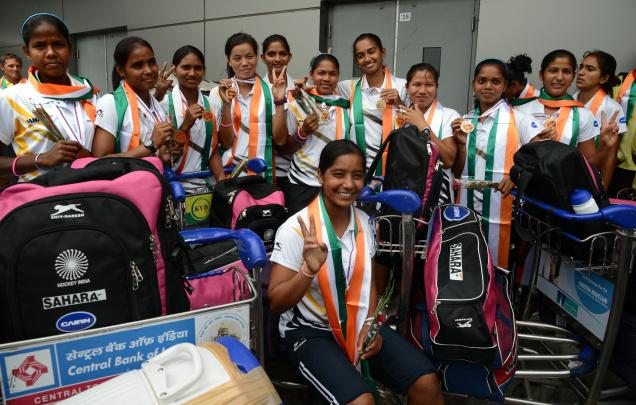
Photograph by S. Subramaniam of The Hindu
 he expenses of playing hockey at the international level are as follows: he expenses of playing hockey at the international level are as follows:
- Goalkeeping Kit:
 80,000 80,000
- Tournament-quality Hockey Stick:
 20,000 20,000
- Artificial Turf Shoes:
 10,000 (with new shoes every 2 months) 10,000 (with new shoes every 2 months)
- Shin Pad:
 8,000 8,000
Women hockey players in India suffer from two handicaps:
Playing a Male-Dominated Sport: For Indian male
hockey players, a host of public sector undertakings like petroleum
companies (e.g., Bharat Petroleum), airlines (e.g., Air India), banks
(e.g., Punjab & Sindh Bank), police (e.g., Punjab Police), Army and
Railways, among others, provide employment to players based on their
hockey talent. For female hockey players, Railways is the only public
sector undertaking that will employ them.
Playing a Non-Cricket Sport: The Indian men's team
that won the u-19 Cricket World Cup were awarded
 20 lakhs
each for winning the title. As Rani Rampal put it in perspective: "The
amount the men's u-19 cricket team got for winning one tournament, most
women hockey players will not get in their entire life." 20 lakhs
each for winning the title. As Rani Rampal put it in perspective: "The
amount the men's u-19 cricket team got for winning one tournament, most
women hockey players will not get in their entire life."
Most of the Indian women hockey players come from economically weaker
sections of the society, where ever three meals a day can sometimes be a
struggle. Seven players of India's bronze medal winning Jr. World Cup
women's team were suffering from an iron deficiency disorder, that can
lead to tiredness and lethargy on the field, as stated by former
national coach Michael Nobbs.
Many of these women hockey players face hardships that other
sportspersons may not have experienced. They play with borrowed shoes
and borrowed sticks from their seniors, and in most cases, such
equipment is either torn or worn.
Rani Rampal's father is a cart-puller and her elder brother is a
carpenter. Manjeet Kaur's father and goalkeeper Bigan Soy's fathers are
farmers. Navneet Kaur's father is an air conditioner mechanic. Vandana
Katariya's father is a technician.
Rani Rampal has a job of a junior clerk in the Railways. Her
teammates Manjeet Kaur, Navneet and Navtoj don't have the secure cushion
of a job.
Navneet
Kaur, the girl who scored the winning goal in the bronze medal penalty
shootout against England, says: "I'm without a job,
and I badly want to support my family. I know what my father has done
for me to get me to this level and I want to return the favour to my
family. Hockey has done a lot for me, but if things carry on like this I might have
quit hockey and start looking at employment avenues."
|
| Award Winning Hockey Documentary Finds No Takers |
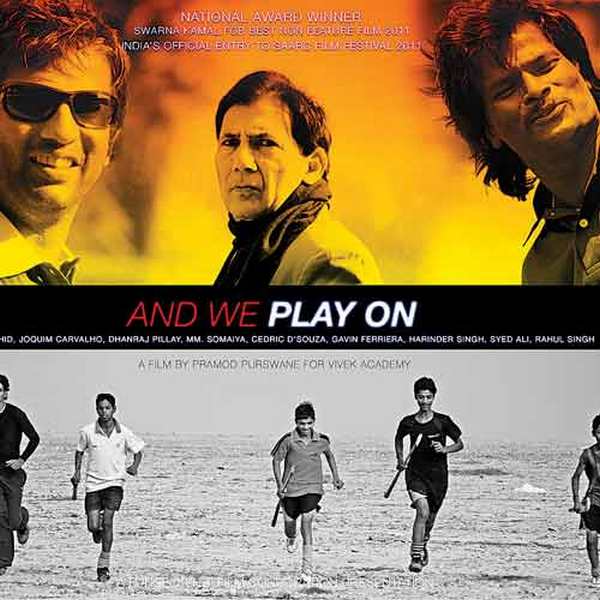
Article by Rutvick Mehta, courtesy DNA India
 ore
than a year after being awarded the Svarna Kamal for Best Non-Feature
Film at the 2012 National Film Awards, And We play On, a documentary on
former hockey Olympian Vivek Singh who succumbed to cancer in 2005, has
no takers for a theatrical release. ore
than a year after being awarded the Svarna Kamal for Best Non-Feature
Film at the 2012 National Film Awards, And We play On, a documentary on
former hockey Olympian Vivek Singh who succumbed to cancer in 2005, has
no takers for a theatrical release.
The documentary - written, directed and produced by Pramod Pursvane -
talks about Vivek's battle with cancer that eventually took his life at
the age of 37. It also focusses on his family, which decided to set-up a
hockey academy for young players in Varanasi, Vivek's hometown. Called
the Vivek Academy, it now has over 100 boys and girls training under
Vivek's father Gaurishankar, with no support from the government.
Shot with a budget of
 14 lakh,
Pursvane has only earned 14 lakh,
Pursvane has only earned
 3 lakh
from the film, which was the prize money of the National Award. Not a
paisa besides that. 3 lakh
from the film, which was the prize money of the National Award. Not a
paisa besides that.
Says Pursvane, "It takes a Farhan Akhtar to sell Milkha Singh; people
remember Bhagat Singh as Ajay Devgn, not the man himself. This
documentary was a very touching story, but in the end, it was about
hockey - no one will watch it."
Says Vivek's younger brother Rahul Singh, "We took the film to some
national and international festivals and almost everyone who saw it was
in tears. We have since gone to various corporates like Reliance,
Universal and so on, but none were interested. Yuvraj Singh recovered
from cancer. A documentary was made on him, and all corporates wanted to
buy it. The difference in these two cases is the sport involved. You can
sell anything in India if it's related to cricket, but if the same story
involves a hockey player, no one bothers to hear."
And yet while money was important, the main purpose of this
documentary was to tell Vivek's story to as many youngsters as possible.
So Rahul decided to send DVDs to various schools and colleges across
Mumbai, but they too showed little interest.
Youngsters who have seen the documentary say it is nothing short of
inspirational. "There is a scene in which Vivek's mother has to
literally run with him while he is playing to feed him when he was a kid.
I want to be as dedicated to the game as that," says 21-year-old Amol
Pal, a product of the Vivek Academy who now plays for Mumbai Customs.
Loss of money notwithstanding, Pursvane is now working on a film on
Ramakant Achrekar, Sachin Tendulkar's coach. "I plan to club Vivek's
documentary with this, so that it is seen by more people. I'm sure I will
earn money from the cricket documentary," he says.
|
| Photograph of the Month |
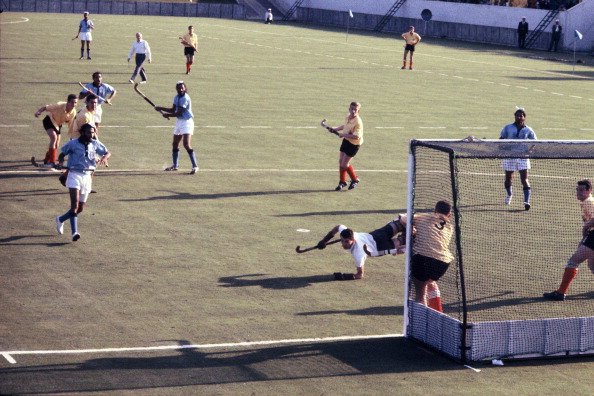
Photograph courtesy Asahi Shimbun
 he
Photograph of the Month for September 2013 is from the 1964 Olympic
hockey competition in Tokyo. he
Photograph of the Month for September 2013 is from the 1964 Olympic
hockey competition in Tokyo.
The 1964 Tokyo Olympics were the first Olympics to be held on Asian
soil. This was the third consecutive clash between India and Pakistan in
the Olympic hockey final.
India beat Pakistan 1-0 in the 1956 Melbourne Olympics. Pakistan beat
India 1-0 in the 1960 Rome Olympics. India went on to beat Pakistan 1-0
in the 1964 Tokyo Olympics to win its 7th Olympic hockey gold.
IHF President Ashwini Kumar did the running commentary for Akashvani
in the final at Tokyo. When Mohinder Lal converted the penalty stroke to
give India the match winner, a hysterical Ashwini Kumar cried himself
hoarse. It was an instant in which Akashvani and Ashwini Kumar were made
for each other, a sound-byte that would become frozen in time.
Shankar Lakshman, one of India's best ever goalkeepers, was declared
the Man of the Final. .
|
| Money Matters |
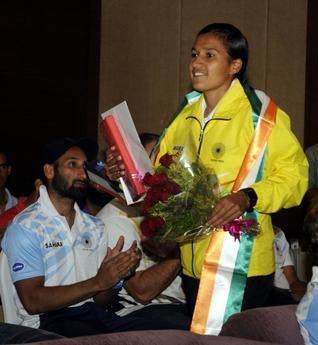
Photograph of Rani Rampal by S. Subramaniam of The Hindu
 he
Indian women team's bronze medal winning performance in last month's
Junior Women's World Cup has resulted in a financial bonanza for the
players, as can be seen from the table below. he
Indian women team's bronze medal winning performance in last month's
Junior Women's World Cup has resulted in a financial bonanza for the
players, as can be seen from the table below.
| Organisation |
Amount |
Recipient |
| Hariyana Government |
 10 lakh 10 lakh |
Rani Rampal, for winning Player of the Tournament |
| |
 5 lakh 5 lakh |
Each of the 6 Hariyana players in Jr. World Cup team |
| |
|
(Rani Rampal, Navneet Kaur, Navjyot Kaur, Manjeet Kaur, Monika Malik, Arya Ritusha Kumari) |
| |
 5 lakh 5 lakh |
Baldev Singh, for coaching the Hariyana women players |
| Jharkhand Government |
 5 lakh 5 lakh |
Goalkeeper Bigan Soy, who is from Jharkhand |
| Odisha Government |
 1.25 lakh 1.25 lakh |
Each of the 4 Odisha players in Jr. World Cup team |
| |
|
(Namita Toppo, Lilima Minz, Anupa Barla, Deep Grace Ekka) |
| Karnataka Government |
 1 lakh 1 lakh |
M. N. Ponnamma, who is from Karnataka |
| Hockey India |
 1 lakh 1 lakh |
Each Member of Indian Women's Team |
| |
 1 lakh 1 lakh |
Rani Rampal, for winning Player of the Tournament |
| |
 1 lakh 1 lakh |
Chief Coach of Indian Women's Team |
| |
 50,000 50,000 |
Each Member of the Support Staff |
| Hockey Jharkhand |
 51,000 51,000 |
Goalkeeper Bigan Soy |
| Hockey Hariyana |
 50,000 50,000 |
Each of the 6 Hariyana players in Jr. World Cup team |
| |
|
(Rani Rampal, Navneet Kaur, Navjyot Kaur, Manjeet Kaur, Monika Malik, Arya Ritusha Kumari) |
| Union Sports Ministry |
 50,000 50,000 |
Each Member of Indian Women's Team |
| |
 25,000 25,000 |
Each Member of the Coaching Staff |
Of the six Hariyana girls, five are from the town of Shahbad, 65 km from
Chandigadh, and one from Hissar. The 4 Odisha girls all hail from Sundergadh
district.
|
| Media Matters |
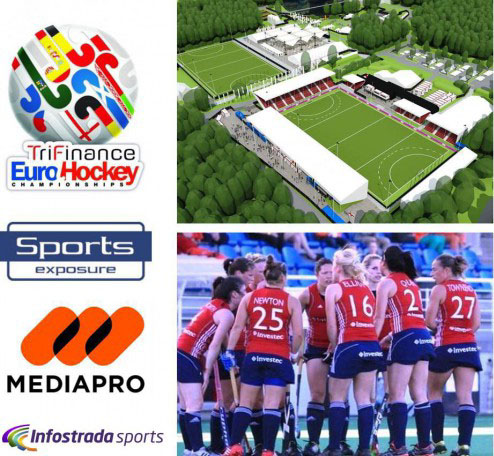
 nfostrada
Sports, a full service sports and media company, was responsible
for the broadcast production of the TriFinance EuroHockey Championships
that was held from August 17-25, 2013, at Braxgata HC in Boom, Belgium. nfostrada
Sports, a full service sports and media company, was responsible
for the broadcast production of the TriFinance EuroHockey Championships
that was held from August 17-25, 2013, at Braxgata HC in Boom, Belgium.
Mediapro, a technical services supplier to the audio-visual sector,
handled the distribution of the games' signals to the broadcast partners
around the world.
Sports Exposure was responsible for advertising sales in the European
market of the pitch-side LED boarding (a first in hockey), as well as
video walls.
Media facilities included a High Definition Outside Broadcast (OB)
Van, equipped with 12 cameras. The Video Umpire was also located in the
OB van to handle video referrals. For the first time ever in hockey,
open microphones in the stadium were used during video referrals,
enabling spectators to listen in to the full video referral process.
The top 8 European women's and men's national teams contested
40 matches over 9 days for the European title. Germany won both the
men's and women's titles.
|
| Visitor of the Month |

 he September 2013 Visitor of the Month is
Jaydeep Mukherjee from Kolkata, who wrote the following to BharatiyaHockey.org. he September 2013 Visitor of the Month is
Jaydeep Mukherjee from Kolkata, who wrote the following to BharatiyaHockey.org.
The Tiger Paw Film Festival was held at Alliance Francaise in
Delhi, from August 27-29, 2013. This is the first Sports Film
Festival to be held in Asia.
Our documentary, 'Leslie Claudis - Story of a Hockey Legend' was
nominated in the Short Documentary category. Leslie participated in
the 1948 (London), 1952 (Helsinki), 1956 (Melbourne) and 1960 (Rome)
Olympics, winning 3 Olympic gold and 1 Olympic silver medals. The 30
minute documentary traces Leslie's roots from Central India, his
participation in the various Olympics, and his eventual settling
down in Kolkata. Leslie Claudius died in Kolkata on 20th December,
2012.
To get more information about our documentary on Leslie Claudisu,
please contact us at:
Piyaly Productions
48, Pratapaditya Place
Kolkata 700026
India
Email: piyaly@hotmail.com
|
| Fun With Numbers |
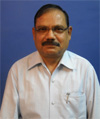
Statistics by B. G. Joshi
 he
September 2013 edition of Fun with Numbers is on the 8th Women's Asia
Cup, which is being held in Kuala Lumpur, Malaysia, from September 21-29, 2013. he
September 2013 edition of Fun with Numbers is on the 8th Women's Asia
Cup, which is being held in Kuala Lumpur, Malaysia, from September 21-29, 2013.
South Korea has the best gender parity in Asia with respect to hockey.
The South Korean men's team has won the maximum number of Asia Cup
titles (4), while the South Korean women's team has won the maximum number of Asia
Cup titles (3).
The last 4 editions of the Women's Asia Cup have been won by 4
different countries - South Korea, India, China, Japan - as shown in the table below:
| Year |
Venue |
Total Teams |
Winner |
Captain |
| 1985 |
Seoul |
6 |
South Korea |
Sang Hyun Chung |
| 1989 |
Hong Kong |
5 |
China |
Yang Hongbing |
| 1993 |
Hiroshima |
7 |
South Korea |
Lim Gae Sook |
| 1999 |
Delhi |
6 |
South Korea |
Eun Young Lee |
| 2004 |
Delhi |
8 |
India |
Suraj Lata Devi |
| 2007 |
Hong Kong |
9 |
Japan |
Kato Akemi |
| 2009 |
Bangkok |
11 |
China |
Ma Yi Bo |
South Korea is the only country to have succcessfully defended the
Women's Asia Cup title, winning consecutive tournaments in 1993 and
1999.
|
![]()